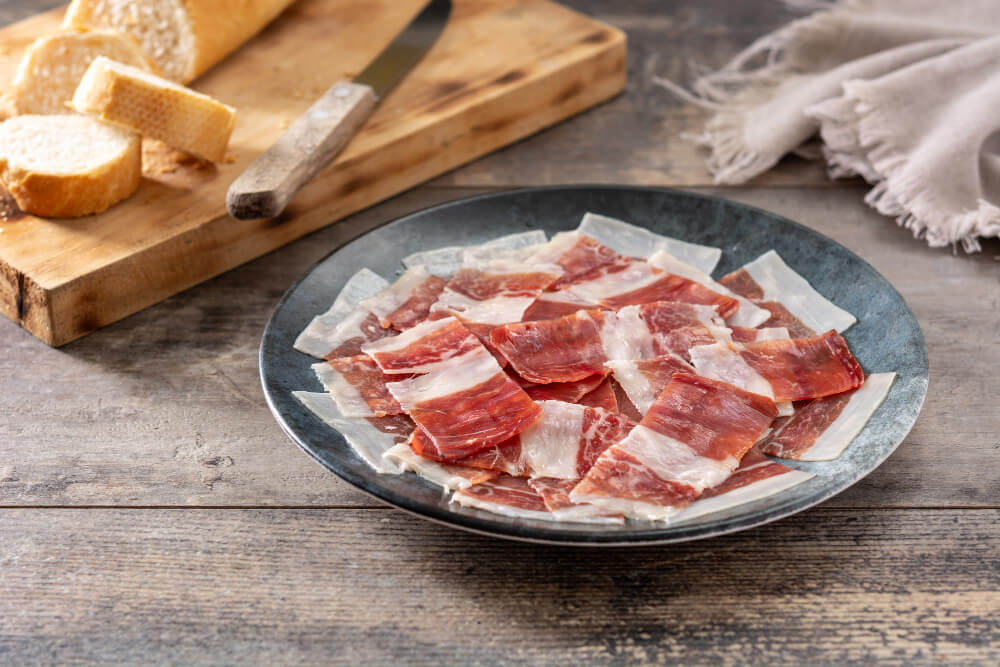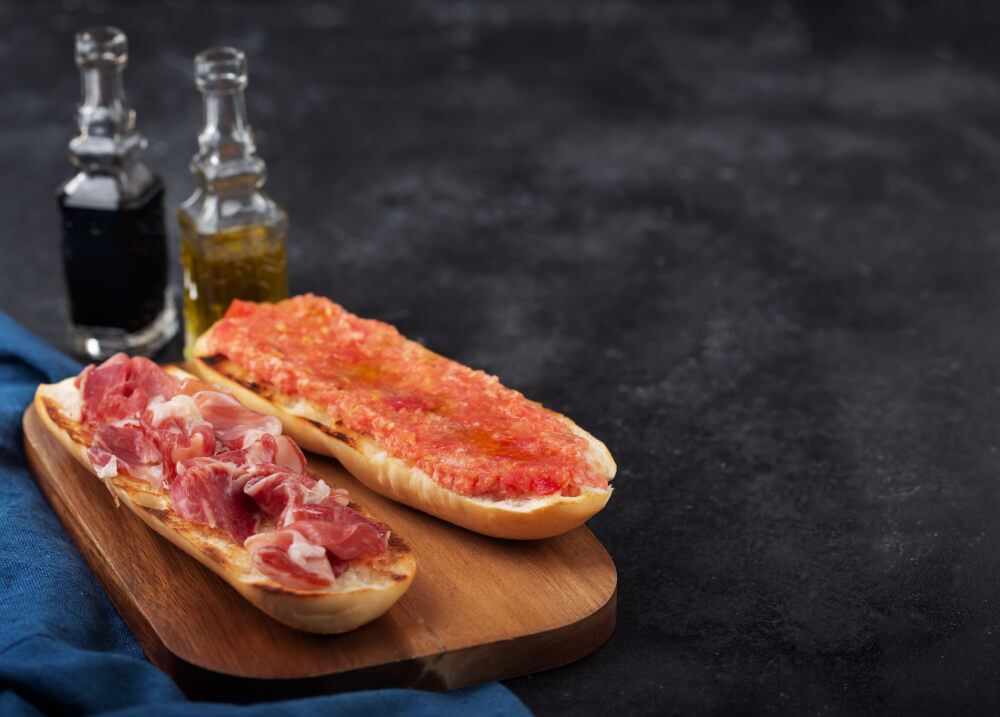The classification of ham can be confusing for those who are not familiar with the process and production standards. However, knowing the labels of ham is essential to understand its quality and origin. These labels inform us about the type of ham we are buying and provide details about its production process, the pig’s diet, and the region of origin. In Jamón Experience, we will break down the main labels you can find on hams, helping you make more informed decisions and enjoy this delicacy with greater knowledge. In any case, there is nothing better than a tasting of Iberian ham to see firsthand the differences between them.
The Ibérico Standard
The Ibérico Standard is a Spanish legislation that regulates the production and marketing of Ibérico products. This standard establishes several categories of ham based on the breed of the pig and its diet. The labels of Ibérico hams are color-coded for easy identification.


Black Label: 100% Acorn-Fed Ibérico Ham
The black label is reserved for the most prestigious and highest quality hams. A ham with this label comes from 100% Iberian pigs (both the father and the mother) that have been fed with acorns, grass, etc. during the period in which the pigs graze freely in the pastures. These hams are considered the purest and most exquisite, with an unmatched flavor and texture. The black label guarantees that the ham has gone through a rigorous quality control process and that it meets the highest standards of the Iberian Standard.
You may be interested in reading our post on how to cut a ham
Red Label: Acorn-Fed Ibérico Ham
The red label indicates that the ham comes from pigs that are at least 50% Ibérico and have also been fed on acorns during the montanera. Although not as pure as black label hams, these hams are still of excellent quality. The red label ensures that the product has a high acorn content in its diet, which significantly contributes to its flavor and texture.
Green Label: Field-Fattened Ibérico Ham
Hams with a green label come from pigs that can be pure Iberian breed or crossed with a minimum percentage of 50% Iberian blood. These pigs are raised and allowed to go out into the countryside for the last few months of their lives, where they eat whatever they want (although it is very rare for them to eat acorns). In the countryside and its diet is made up of a mixture of feed and natural resources from the environment. The green label indicates a good quality ham, although it does not reach the level of exclusivity of acorn-fed hams.
Field bait (green label) is usually the one with the best quality-price ratio, because the quality is very high and the price is significantly lower than that of acorn bait.
What outside of Iberian ham? You may be interested in reading our post on types of ham
White Label: Grain-Fed Ibérico Ham
The white label is used for hams that come from Iberian pigs fed with feed on farms. These pigs can be pure Iberian breed or crossed with at least 50% Iberian blood. An Iberian ham will always be better than a non-Iberian ham, because the infiltration of fat provides a flavor and texture that a non-Iberian ham will never be able to achieve. An Iberian ham will always be a high quality product, with a characteristic flavor and a pleasant texture, unattainable for any ham that does not come from the Iberian breed.
Denominations of Origin
In addition to the labels based on the Ibérico Standard, many hams carry denomination of origin labels. These labels guarantee that the ham has been produced in a specific region of Spain, following traditional methods and strict quality controls.
Jamón de Huelva (Jabugo)
The denomination of origin Jamón de Huelva, also known as Jabugo, is one of the most prestigious. Hams from this denomination of origin come from Ibérico pigs raised in the Sierra de Huelva and fed on acorns during the montanera. Jabugo hams are famous for their intense flavor and smooth, juicy texture.
Jamón de Guijuelo
The denomination of origin Guijuelo is located in the province of Salamanca. Hams from this denomination of origin are characterized by their delicate flavor and fine texture. Guijuelo Ibérico pigs are fed on a mixed diet of feed and natural resources, including acorns. The region’s climate favors the optimal drying and curing of the hams, resulting in a high-quality product.
Jamón de Dehesa de Extremadura
The denomination of origin Dehesa de Extremadura covers a wide area in the autonomous community of Extremadura. Hams from this denomination of origin come from Ibérico pigs raised in dehesas, fed on acorns and other natural resources. Dehesa de Extremadura hams are known for their balanced flavor and excellent quality.

Understanding the labels of ham is crucial to fully appreciate this exquisite product. From the black label of 100% acorn-fed Ibérico hams to the different denominations of origin, each label tells a story about the origin, diet, and production process of the ham. The next time you find yourself facing a selection of hams, take a moment to read the labels and choose the product that best suits your preferences and expectations. This way, you can fully enjoy the complete experience that this gem of Spanish gastronomy offers.

